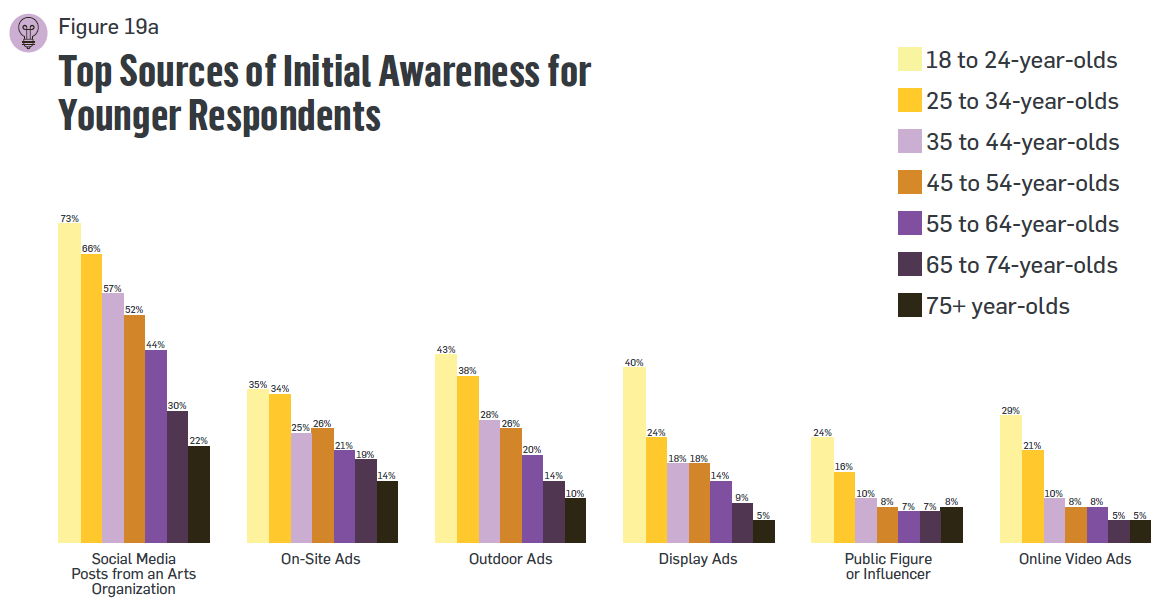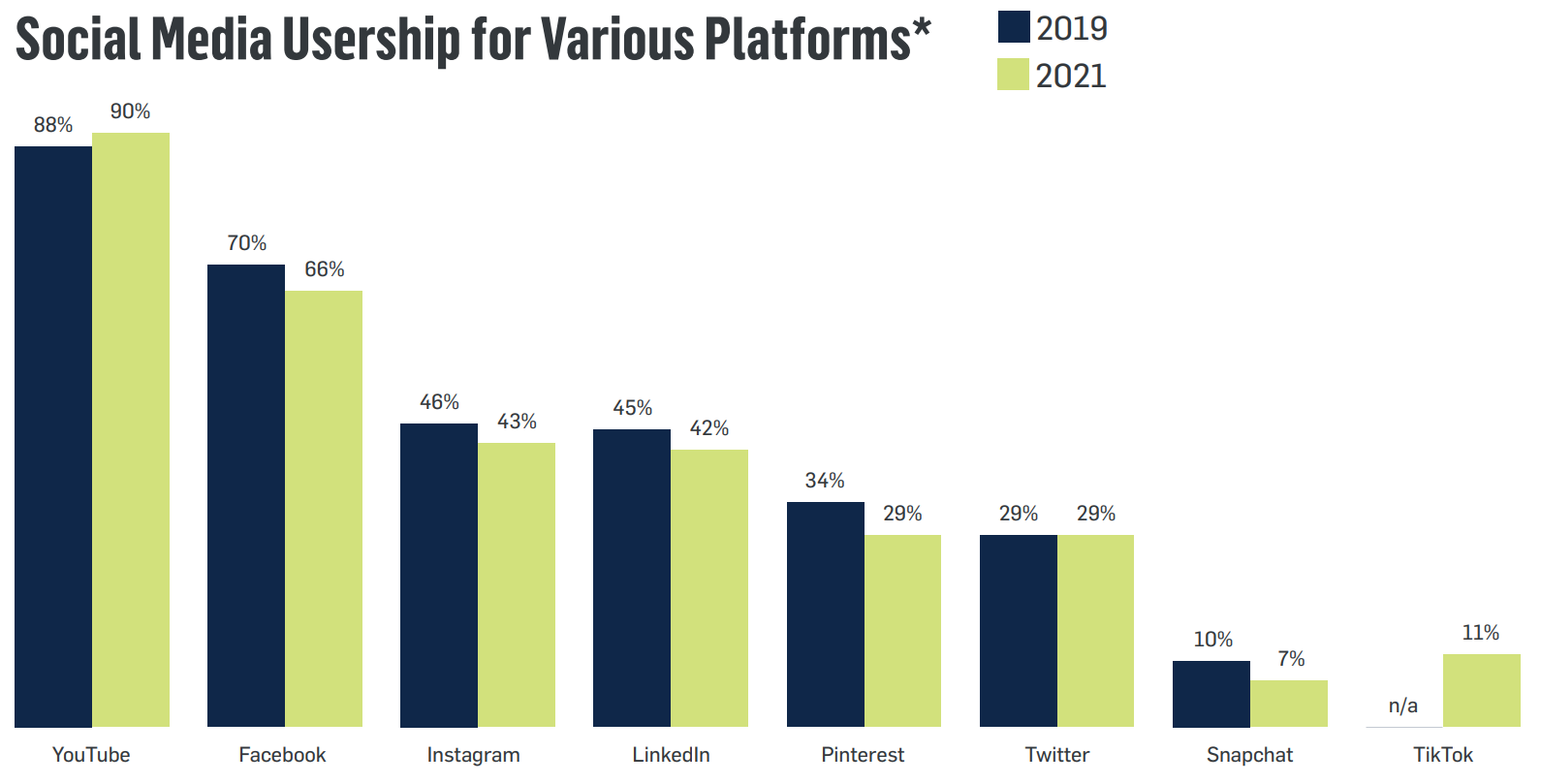It is trite at this point to say that the arts continue to experience profound changes as we progress through the 2020s. This is especially true of the fundraising landscape in the nonprofit arts sector. Shifting trends in technology usage and a growing need for arts organizations to embrace DEI practices disrupt longstanding ways of operating. Changing demographics are driving these changes, but the COVID-19 pandemic exacerbated them, leaving the nonprofit arts sector in a dynamic but uncertain position.
SMU DataArts found that between 2017 and 2020, the average arts organization budget decreased by 4%. Simultaneously, it took 3% more in fundraising expenses to raise $1 of contributed revenue over time. According to the Arts Funders Forum, the arts represent just 4% of total charitable giving. Unsurprisingly, but nonetheless disappointingly, the arts are typically undervalued in the eyes of donors.
Colleen Dilenschneider identified two types of members at arts nonprofit organizations. Transaction-motivated members join or attend events for the potential benefits offered to them by the organization, such as discounts or free gifts, whereas mission-motivated members join for the primary purpose of supporting the organization’s mission. While it isn’t necessarily perfunctory to categorize arts donors into these categories, a mission-oriented mindset can be expanded to go beyond merely the mission of the organization and into how they operate as conduits to making change in the world.
Organizations’ marketing strategies and missions themselves may need to be reexamined to determine whether or not they align with the next generation of donors. There are a number of practices that organizations can start to embrace in order to expand their mission to a more diverse population while not running the risk of alienating their current support base.
Adjusting digital Strategies
Social media advertising has generally declined in significance for nonprofit marketing and fundraising purposes. The return on investment for advertising on social media is minimal. For Facebook, Twitter, and LinkedIn, organic reach is around 4% and sits slightly higher for Instagram at 6%. Additionally, the current controversies involving Twitter, Meta, and TikTok and continuous studies on social media’s impact on youth and mental health leave the future of social media unpredictable.
However, social media use is far from irrelevant and can still be utilized tactfully. Capacity Interactive’s 2021 report Performing Arts Ticket Buyer Media Usage Study found that younger audiences tend to first become aware of an event or an organization's mission and impact through its’ social media posts at higher rates than older audiences.
Fig. 1 Source: 2021 Performing Arts Ticket Buyer Media Usage Study, pg. 41
Looking further into this trend, the study found that YouTube was the dominant social media platform overall, having 90% usership among respondents.
Fig. 2 Source: 2021 Performing Arts Ticket Buyer Media Usage Study, pg. 57
Youtube
In contrast with users of other social media platforms, YouTube users tend to engage with the platform less frequently, with 72% of total respondents reporting they use it less than daily. This gives arts organizations the opportunity to plan and create higher-quality content for YouTube, as daily or even weekly content isn’t necessary, and then promote it through other social media platforms.
Facebook & Instagram
While Facebook and Instagram are the most commonly used by organizations, other platforms exist with the potential to cultivate a new support base. While TikTok is still relatively niche for performing arts organizations’ audiences, it’s been a surprising catalyst for increasing the popularity of classical music by making it more accessible. #classical music has become tremendously popular in the United States with 3 billion overall views. Of its audiences, 66% are between ages 18-24.
Reddit has been a successful tool for nonprofits trying to reach a new cohort of donors. Reddit users ages 18-29 comprise 36% of the total user base, which consists of 430 million users. This discussion-based platform is dedicated to communities (called subreddits) that gather around shared values and interests, giving nonprofits an easy in to engage with users about their organization’s mission and ask for support. Authenticity on Reddit is key. Therefore, it is crucial to engage with users in subreddits in meaningful ways. Aside from seeking new donors, it can also be a great source of information, ideas, and resources in subreddits such as r/nonprofits or r/Philanthropy.
Aside from social media practices, email marketing remains a core marketing and fundraising tool. It’s a highly effective way to promote events or facilitate donations among all age groups. However, every one of us gets bombarded with emails on a daily basis. So it is once again important to create meaningful and thoughtful content that is worth sharing. Investing in SEO and SEM can also help drive traffic to an organization’s website.
Donor Retention Through Data Stewardship
Arts organizations already understand that donor acquisition is a major challenge, but donor retention is a close second. One of the most advantageous things a nonprofit organization can do is get its data in order across its systems. The most common reason donors choose not to donate again is because of an organization’s poor or infrequent communication. This is largely a result of internal data mismanagement. Focusing on internal data management processes and integration enables an organization to engage with its current donor base more regularly, which is more likely to lead to more dollars donated. This can best be accomplished by data stewardship.
Data stewardship is the management and oversight of an organization's data assets.
In a Nonprofit Tech for Good article on tech integration, Brian Greenwald argues that investing in system integration can amplify nonprofits’ fundraising efforts for three key reasons.
It allows an organization to get a full picture of its donor base, allowing them to gain more insights about its audiences. This can then inform marketing strategies and messaging that better targets current audience members’ motivations.
Ultimately, an integrated data system will save time and energy, allowing staff to focus on the organization's mission for which it is raising funds. By putting off these tasks, more work and hassle are created for the future for current and incoming staff.
Rather than investing in a completely new database, existing databases and software can still be retained. An integrated data system allows for the optimization of the data on hand rather than the collection of brand new data.
Donor retention in arts and culture organizations decreased by 4.6% between January and June 2022, even as they saw increased revenue from the previous year.
The next generation of giving
The arts face a unique challenge in that their causes are often overshadowed by larger-scale global issues such as climate change, racial justice, and healthcare. So-called “next-gen donors” see these issues as high priorities. The arts sector is at a turning point where younger generations are poised to take on the largest transfer of intergenerational wealth in history. Arts organizations stand to be seen as more relevant by connecting their missions to a particular cause, but only if they do so authentically. A shift in focus toward DEAI issues in the arts is probably the primary way for arts organizations to accomplish this.
A 2021 SMU DataArts study focused on racial and income representativeness in performing arts organizations found that the more subscribers an organization has, the lower its levels of “audience racial and income representativeness.” Looking at racial and income diversity specifically, BIPOC audience representativeness improved steadily over the 2010s. Income representativeness, however, continued to decline. Perhaps unsurprisingly, pricing was found to be a primary negative driver of audience DEI rates.
Fig. 3 Source: The Intersection of Funding, Marketing, and Audience Diversity, Equity, and Inclusion, pg. 8
With stagnant wages and the costs of everything rising year after year, younger generations are struggling financially more than previous generations have. Given these economic hardships, it seems almost unfair for organizations to ask them for contributions. And in many cases, changing admission prices may not be feasible. One potential solution, however, may be for organizations to adopt a Donate Now, Pay Later option (sometimes also called Give Now, Pay Later). Donors can enjoy the convenience of paying off a donation over time in a manner that best accommodates them while receiving the full gross tax deduction immediately. Organizations receive the contribution right away. Several DNPL apps exist, such as BGenerous, CauseVox, and Givzey. Most of these services require a small fee on each transaction, but the payoff of including a DNPL option may well be worth the investment.
The Core of Any Ask is the Mission
In a December 2022 article, Colleen Dillenschneider wrote that focusing on the mission will be a crucial fundraising strategy for 2023. Her research found that arts patrons driven by wanting to ‘positively impact an arts organization’s mission are 21.2% likely to give to performing arts organizations. The most important thing to remember is authenticity. Donors of all ages and backgrounds want to see organizations having a positive social impact on their communities. In the coming years and beyond, social relevance could be the key to financial resilience.
-
“#classicalmusic, Insights.” TikTok Creative Center. Accessed February 18, 2023. https://ads.tiktok.com/business/creativecenter/hashtag/classicalmusic/pc/en?countryCode=US&period=30.
“10 Digital Marketing & Fundraising Trends to Prioritize in 2023.” Nonprofit Tech for Good. December 19, 2022. https://www.nptechforgood.com/2022/12/19/10-digital-marketing-fundraising-trends-to-prioritize-in-2023-2/.
Cowley Wolf, Melissa. “Arts Funding Is Facing an Existential Crisis. To Survive, Cultural Organizations Must Change How They Frame Themselves to the Public.” ArtNet News. December 8, 2020. https://news.artnet.com/opinion/arts-funding-op-ed-melissa-cowley-wolf-1929365.
Dilenschneider, Colleen. “Mission-Motivated Members Find Greater Value in Their Memberships (DATA).” Know Your Own Bone. August 31, 2022. https://www.colleendilen.com/2022/08/31/mission-motivated-members-find-greater-value-in-their-memberships-data/.
Dilenschneider, Colleen. “Want Renewals and Donations From Members and Subscribers? Your Mission Matters (DATA).” Know Your Own Bone. December 7, 2022. https://www.colleendilen.com/2022/12/07/want-renewals-and-donations-from-members-and-subscribers-your-mission-matters-data/.
“For stronger fundraising, invest in data stewardship.” NTEN. February 12, 2019. https://www.nten.org/blog/for-stronger-fundraising-invest-in-data-stewardship.
Greenwald, Brian. “3 Reasons to Invest in Nonprofit Fundraising Tech Integration – Even During a Recession.” Nonprofit Tech for Good. October 21, 2022. https://www.nptechforgood.com/2022/10/21/3-reasons-to-invest-in-nonprofit-fundraising-tech-integration-even-during-a-recession/.
Juliett, Leah. “ A Rookie's Guide to Reddit For The Future of Nonprofit Fundraising.” Funraise. November 14, 2022. https://www.funraise.org/blog/a-rookies-guide-to-reddit-for-the-future-of-nonprofit-fundraising.
“Performing Arts Ticket Buyer Media Usage Study 2021.” Capacity Interactive. Accessed January 22, 2023. https://ideas.capacityinteractive.com/performing-arts-ticket-buyer-media-usage-study.
Pratt, Mary K. “Definition: data stewardship.” TechTarget. Updated March 2022. https://www.techtarget.com/searchdatamanagement/definition/data-stewardship#:~:text=Data%20stewardship%20is%20the%20management,accessible%20in%20a%20consistent%20manner.
“Quarterly Fundraising Report Year-to-Date Nonprofit Sector Trends, Q2 2022 (Jan 1, 2022 - June 30, 2022).” Fundraising Effectiveness Project. Accessed January 4, 2023. https://data.givingtuesday.org/fep-report/.
Robinson, Jill, Zannie Voss, and Melissa Cowley Wolf. “Is Your Organization Ready For The Next Generation? Next Generation Arts Philanthropy | TRG 30.” TRG Arts. YouTube video, 31:12. Streamed live on December 8, 2021. https://www.youtube.com/watch?v=vnlSlk3ddH0.
St. Clair, Neil. “How Donate Now, Pay Later is Transforming Millennial & Gen Z Giving for Nonprofits.” Nonprofit Tech for Good. January 12, 2023. https://www.nptechforgood.com/2023/01/12/how-donate-now-pay-later-is-transforming-millennial-gen-z-giving-for-nonprofits/.
Turner, Cory. “10 things to know about how social media affects teens' brains.” NPR. February 16, 2023. https://www.npr.org/2023/02/16/1157180971/10-things-to-know-about-how-social-media-affects-teens-brains.
Voss, Zannie, Glenn Voss, and Young Woong Park. “The Intersection of Funding, Marketing, and Audience Diversity, Equity, and Inclusion.” SMU DataArts. April 2021. Accessed January 22, 2023. https://culturaldata.org/pages/the-intersection-of-funding-marketing-and-audience-diversity-equity-and-inclusion/.




